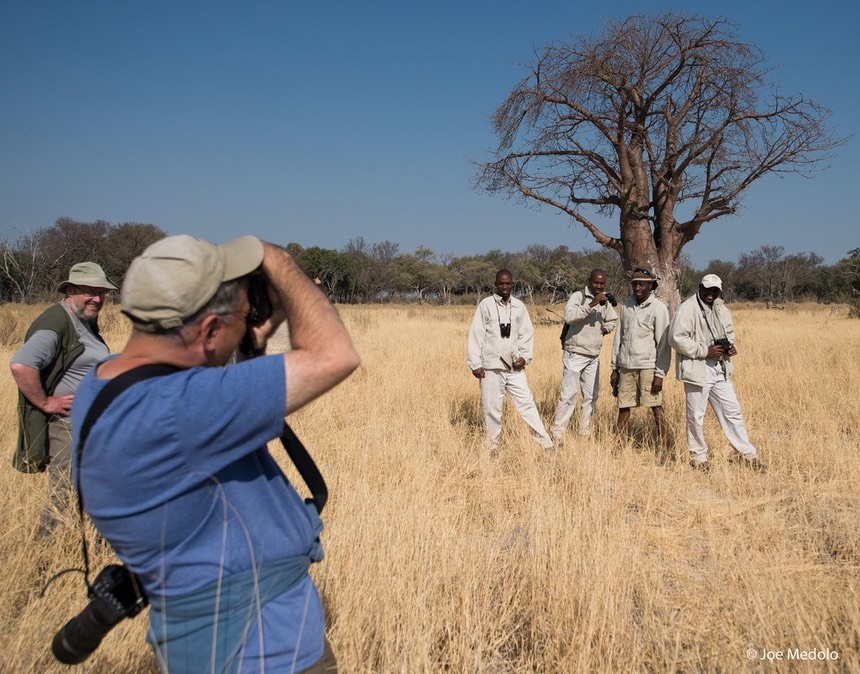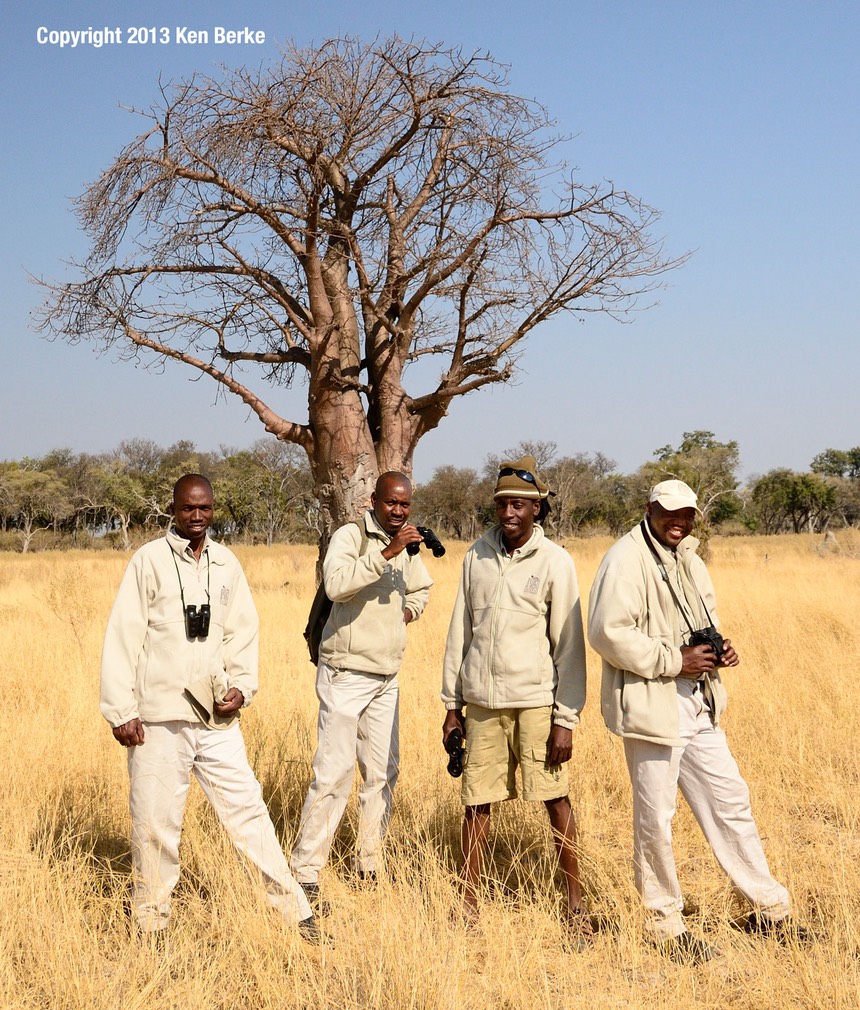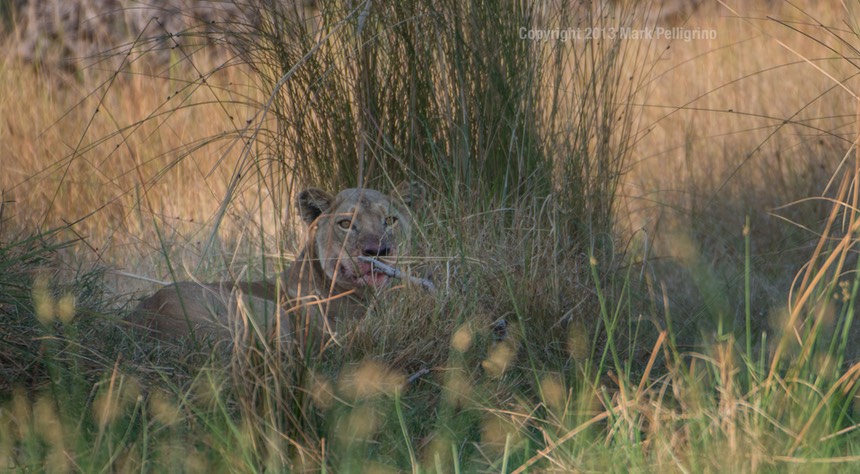August 23
I didn't say much about Camp O in yesterday's entry, so I need to make up for that today. It's a very pleasant oasis in the middle of the delta that has a motto:

The camp itself has an open lodge area, a covered eating area, a pool, an elevated viewing platform, and less than a dozen very nicely appointed tent cabins scattered in the woods.
Thus, it didn't take long for a change to come over the participants. I made the mistake last night of telling the students that if they needed any "chill" time, Camp O was probably the best place to do it. An endless bar, beautiful grounds, attentive staff, lots of birds should you actually want to get out your camera. Seems like most have taken me up on it, so much so that this afternoon's image review has been cancelled and postponed until tomorrow.
So here I sit by the pool by myself trying to catch up with the proceedings.
Most of the group went out this morning on a walk. After breakfast we took the boats out to a nearby island, and went for a leisurely on-the-ground walk. Adam did his best imitation of a biologist/naturalist/historian lecturer, running through everything from tracks and what they told us to the various types of dung we saw and why they were different (and important). Trees, animals, terrain, the ecology of termite mounds (see below); it doesn't matter, as Adam seems to have an endless store of knowledge, and plenty of colorful stories to go with it.

Generally when you're on the ground it's difficult to get close to animals. Indeed, it's often difficult to even see them because they'll move off the moment they catch wind of you, and you're down at ground level so are trying to see everything through the bush. Humans have been hunting animals for a long time in Africa, after all, so detecting a band of 12 or so human sorts coming at you is a good time to put some distance between them and you if you're prey.
The first impala we saw were like that. One sight of us and they were off on a run to put more ground between us, to the point where they disappeared into the grass where we couldn't even see them. But as our walk progressed, we eventually came to see elephant at not too far a distance, and then found some warthog that wanted to continue rooting in the soft grassy shade they'd found than run away from us. Other than some warthog that have been domesticated, these were the most cooperative I've encountered. At one point, some of us were using 70-200mm lenses as the animals continued digging for whatever it was they had found.


Even the impala started to cooperate and tolerate us after a while. They seemed more fearful of something they smelled up wind than us, so atypically, most students eventually got shots of the impala on the walk, too.
But the real star of any walk around Africa is the surroundings. The long open grass plains. The Baobab trees. The termite mounds. The way the terrain quickly moves from reed-filled waterways to marshland to hard ground to forest. The ubiquitous animal trails and signs of their passing. And here deep in the delta, the marvelous cacophony of bird calls as the sole sound other than the wind rattling through the trees. Oh yes, and the clicking of shutters.
As usual, I like to mix things up a bit. Would you believe that, out the middle of a field, in the middle of the Okavango delta, with beautiful baobab trees at our feet and animals all around, I started into a quick lesson in posing people? No? Well, here's me working with Ken working to try to get a purely African shot of our local guides:

Notice the fellow on the right. What we're trying to get away from is the "everyone standing straight up and down, legs together, arms at their sides" pose. At this point in the process, I've gotten the legs apart, and a couple of the guides out of those awful looking poses everyone gets in this kind of shot and I'm asking Ken if he likes that better than what he originally had. We continued to work through this until we had something far better than what we started out with. Here's what Ken was seeing through the viewfinder as Joe took the above shot:

Not stiff at all, but I believe we eventually got some better poses once all the guides figured out just how far I wanted them to go. That's one thing about great poses: to the poser they feel very, very wrong. To the two-dimensional camera capture, they look very right. It's very difficult to over exaggerate a pose and not have it work.
Here's another example from our impromptu posing session, this time using Adam:

The point wasn't so much to create the perfect shot, but to teach everyone to break the habit of "can I get you to stand in front of this tree" type of thinking. Heck with in front of the tree. How about "in" the tree?
Too often you get into these scenarios and you just accept what you get. You ask someone to be in a picture. They do only what they've seen everyone else do, get in front of something and stand there like straight-up-and-down mannequins who are afraid to show any personality. Instead of interacting with them and trying to get "more," or something different, or something that captures personality, the photographer just accepts the pose the person gives them and they get the same shot as everyone else.
Well, that ain't the way the great photographers do it in the studio, so why should be any different outside? You have to interact with your subjects, relax them, get them into more natural poses (or artificial poses they wouldn't have considered), and make them part of the scene rather than just some folk you lined up as if you were doing a mug shot. Joe's shot of Adam is actually pretty good in one respect: it captures the essence of Adam, which is that he is relaxed and comfortable in the African wilds, yet always watching out in the grass for what's going on.
Anyhow, that was the morning. I already said that the afternoon was pretty chill for a lot of people. But not everyone.
A couple of folk went out in the canoes:

They were rewarded with swimming with elephants:

Meanwhile, at lunch Adam decided he wanted another walk, so he offered to take anyone that wanted to join him to another island. Now, I know Adam. I really, really, really wanted to go on that walk, but I had already offered to stay at the lodge and be available to students who decided to chill. Adam has this sly way about him. When he tells you that we're going to do something, that's normal and it'll be good. When he suggests that you could do something with him, he's usually got something up his sleeve and it'll be great. Short version: any time that Adam Hedges gives you the option of doing something off schedule with him, take it. Don't hesitate. Just grab your camera and say yes.
Which is what Mark did. And only Mark.
So he, Adam, and the boat driver/guide from Camp O took off for another island. An island that they knew had a lion on it. Have you ever walked with lions? Didn't think so. Well, Mark can now say he has. But it was even more interesting than that. As it turns out, the female lion had a kill, and not too far from where the landed the boat. In fact, to get into position to see the kill, they had to wade along shore to get a better angle. And that got Mark this shot:

400mm FX. On foot. Nothing between you and the lion. Standing in a couple feet of water. Does that get your adrenaline running? Ask Mark.
The "chill" folk actually weren't all that chill, either. Lambert was like a three-year old in a toy store, flitting from one end of camp to the other, back, and back a few more times.
He shot weavers:

He shot birds on tables:

He even got the only shot of the 14th species of antelope we encountered (bonus extra credit for anyone that can identify it):

All in all, a great day at Camp O. But what am I thinking: every day at Camp O is great.
